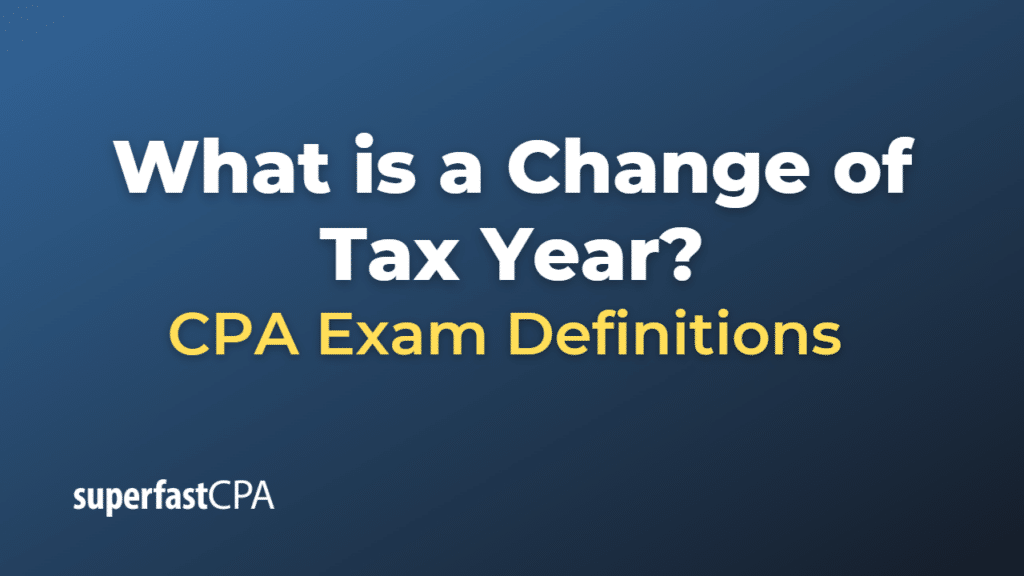Change of Tax Year
A change of tax year, also known as a change in tax year-end or accounting period, refers to the process of altering the end date of a taxpayer’s annual accounting period for tax reporting purposes. The accounting period, typically 12 months long, is the time frame during which a taxpayer records financial transactions and compiles financial statements for tax reporting. For most individual taxpayers, the tax year corresponds to the calendar year, beginning on January 1st and ending on December 31st. However, businesses and some individuals may use a fiscal year that differs from the calendar year.
There are various reasons why a taxpayer may wish to change their tax year, including:
- Aligning the tax year with the fiscal year: A business may want its tax year to coincide with its fiscal year for consistency in financial reporting and tax planning.
- Matching the tax year with the natural business cycle: Some businesses have seasonal operations, and changing the tax year may better align with the peak or end of their business cycle, making financial reporting and tax planning more manageable.
- Changes in ownership or structure: A company may change its tax year to align with the tax year of a parent company or other related entities after a merger, acquisition, or reorganization.
- Personal reasons: Individual taxpayers who are self-employed or have business income may choose to change their tax year for personal reasons or to align with their business activities.
Changing the tax year typically requires the approval of the tax authorities, such as the Internal Revenue Service (IRS) in the United States. Taxpayers must file a request for a change in their tax year and meet specific requirements to be granted approval. Depending on the jurisdiction, changing the tax year may also require the taxpayer to file a short tax return for the period between the old and new tax year-ends.
It is essential to consult with a tax professional when considering changing your tax year, as the process can be complex and may have implications for your tax planning and compliance.
Example of a Change of Tax Year
Let’s consider an example of a change of tax year for a hypothetical company:
XYZ Corporation, a retail business, has been using a calendar year (January 1st to December 31st) as its tax year since its inception. However, the company experiences a significant portion of its sales and activities during the holiday season, which makes it challenging to close the financial books and prepare tax filings by the end of the calendar year.
To better align its tax year with its natural business cycle, XYZ Corporation decides to change its tax year-end to February 28th (or 29th in leap years). This change allows the company to close its financial books after the peak holiday season and have more time to prepare its tax filings.
To change its tax year, XYZ Corporation must:
- Consult with a tax professional to ensure that the change complies with the tax regulations in its jurisdiction and to understand the implications of the change.
- File a request with the tax authorities (such as the IRS in the United States) to change its tax year, providing a valid reason for the change and meeting any specific requirements.
- If the change is approved, XYZ Corporation will need to prepare a short tax return for the period between the old and new tax year-ends. In this example, the short tax return would cover the period from January 1st to February 28th (or 29th in a leap year).
- Going forward, XYZ Corporation will use the new tax year (March 1st to February 28th/29th) for its financial reporting and tax filings.
By changing its tax year, XYZ Corporation can better align its financial reporting and tax planning with its natural business cycle, making it easier to manage its financial and tax obligations.













